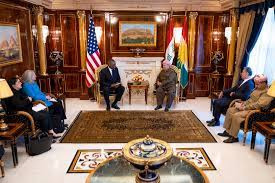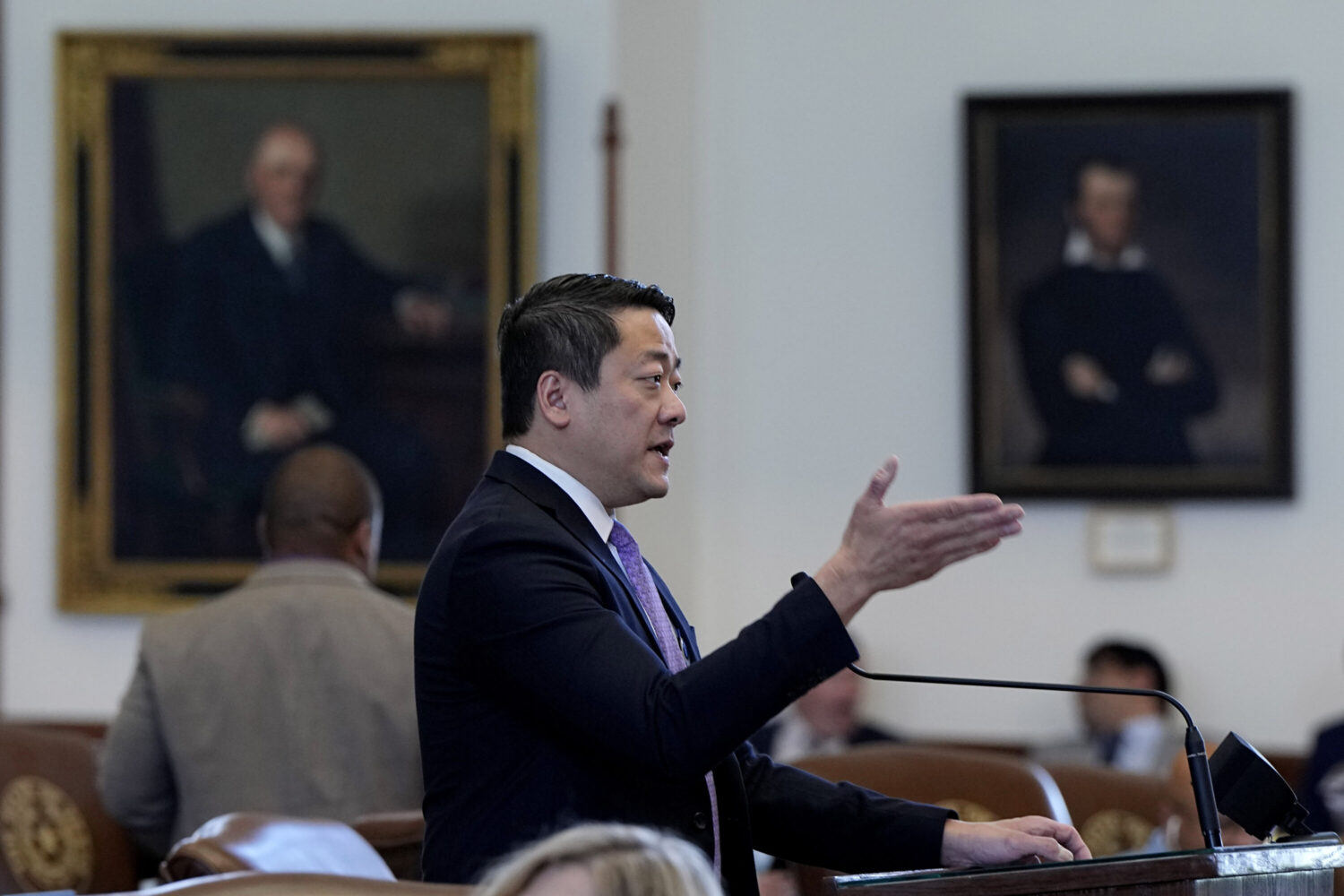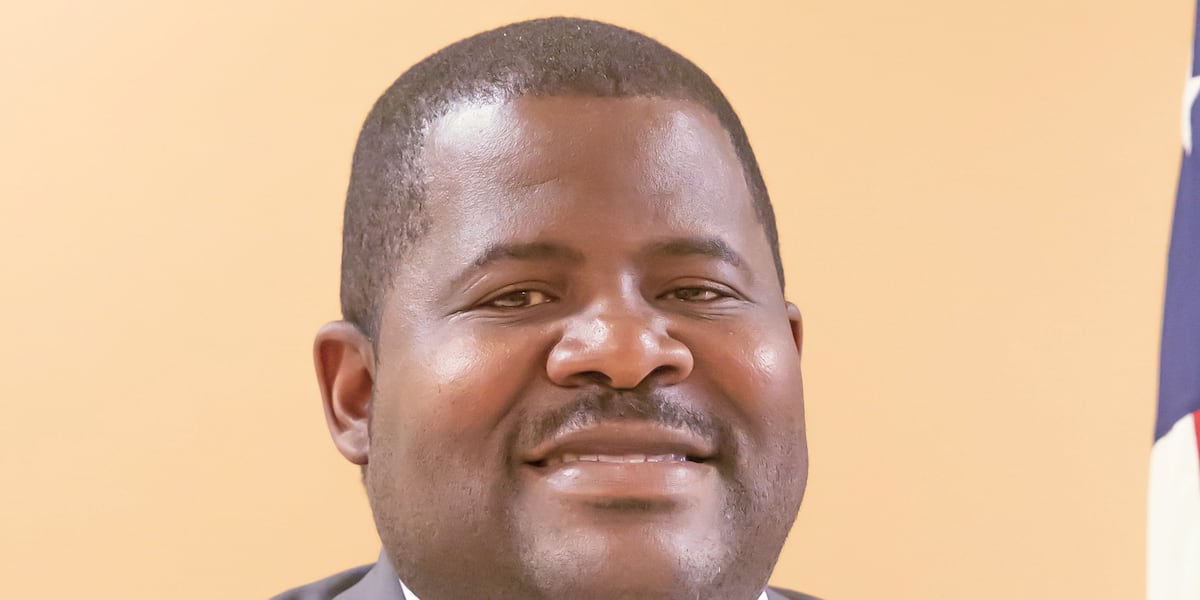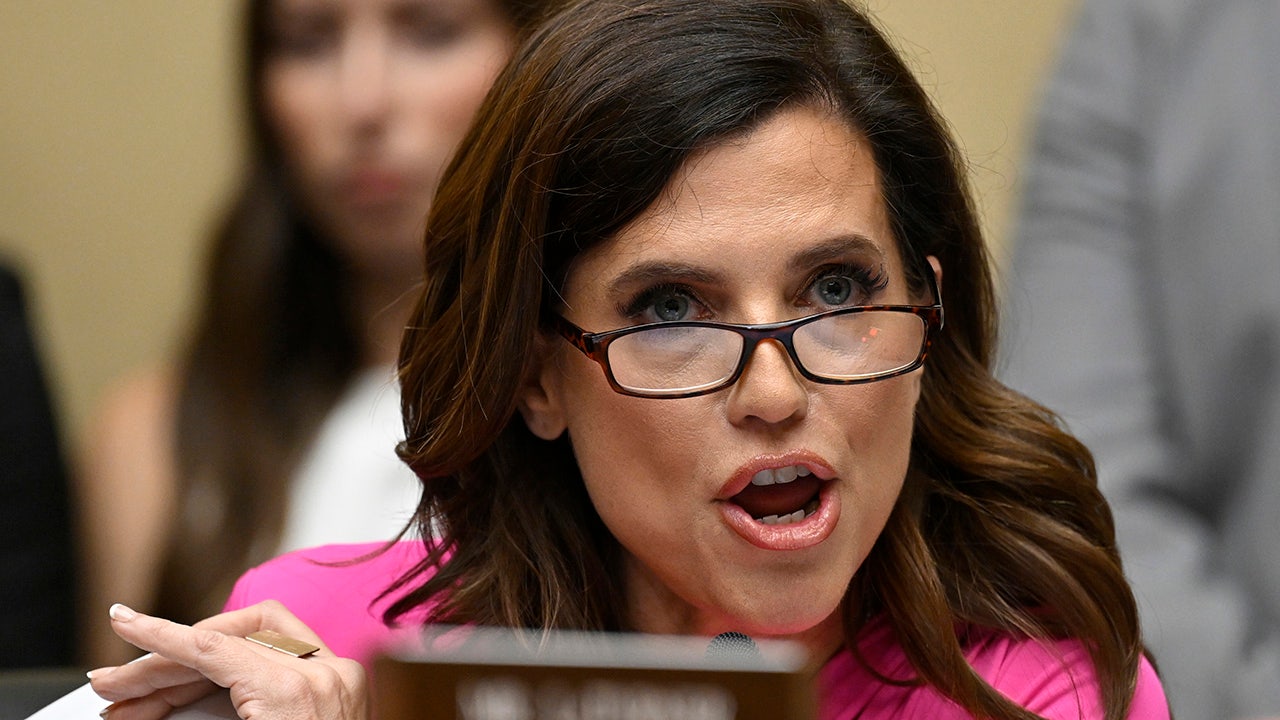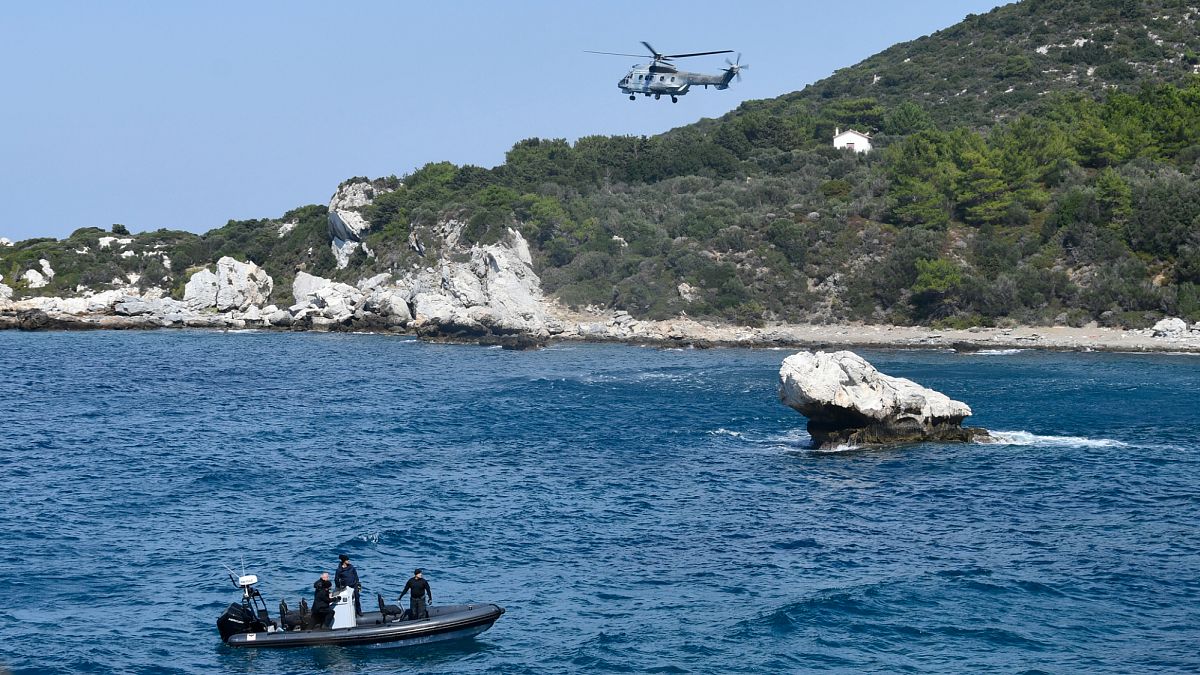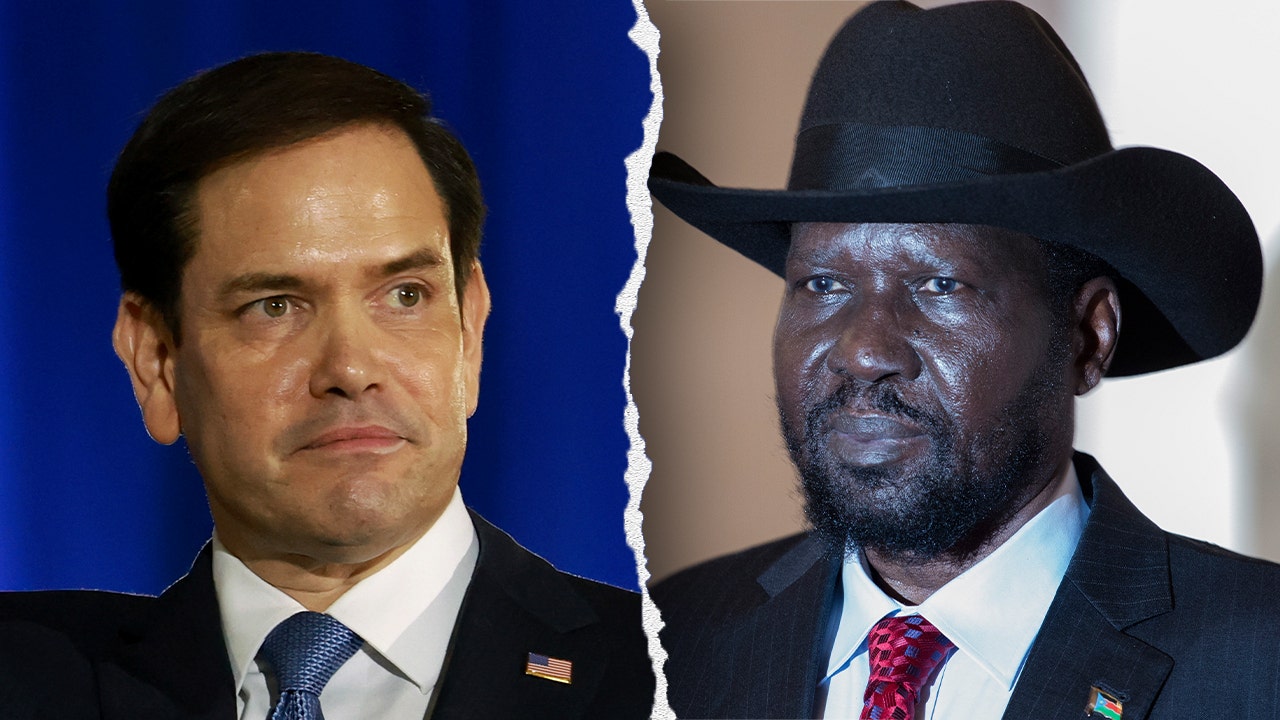Kurdish autonomous regions in Iraq and Syria are increasingly coming under threat by regional powers, namely Iran and Turkey. They are also increasingly becoming vulnerable to internal challenges posed by the central governments in Baghdad and Damascus. The United States, at different stages, played a central role in the establishment of two autonomous Kurdish regions in Iraq and Syria. But the changing dynamics in both countries and the broader region may compel Washington to get even more involved in preserving these Kurdish entities.[1]
This article will explore how the once-promising Kurdish autonomous regions in Iraq and Syria have been in fragile situations, facing multifaceted internal and external challenges, and how the United States could help its Kurdish allies in the two countries protect their political projects.
The Kurdish-Led Autonomous Administration in Syria and Its Many Enemies
September and October of 2023 were among the most challenging months for Syrian Kurds and their semi-autonomous region since the northeastern part of Syria came under the control of Kurdish forces months after the beginning of the country’s civil war in 2011.
In September, an unprecedented revolt led by Arab militias formerly affiliated with the Kurdish-led Syrian Democratic Forces (SDF) nearly overran the U.S.-backed group’s presence in the eastern province of Deir Ezzor, a former stronghold of the Islamic State (ISIS) terror group. The rebellion prompted a major operation by the SDF, which ended with the group regaining its control over several villages that had been briefly taken by the rebels. The clashes between the two sides in the Middle Euphrates Valley killed 29 Arab militiamen, 25 SDF fighters and 9 civilians.
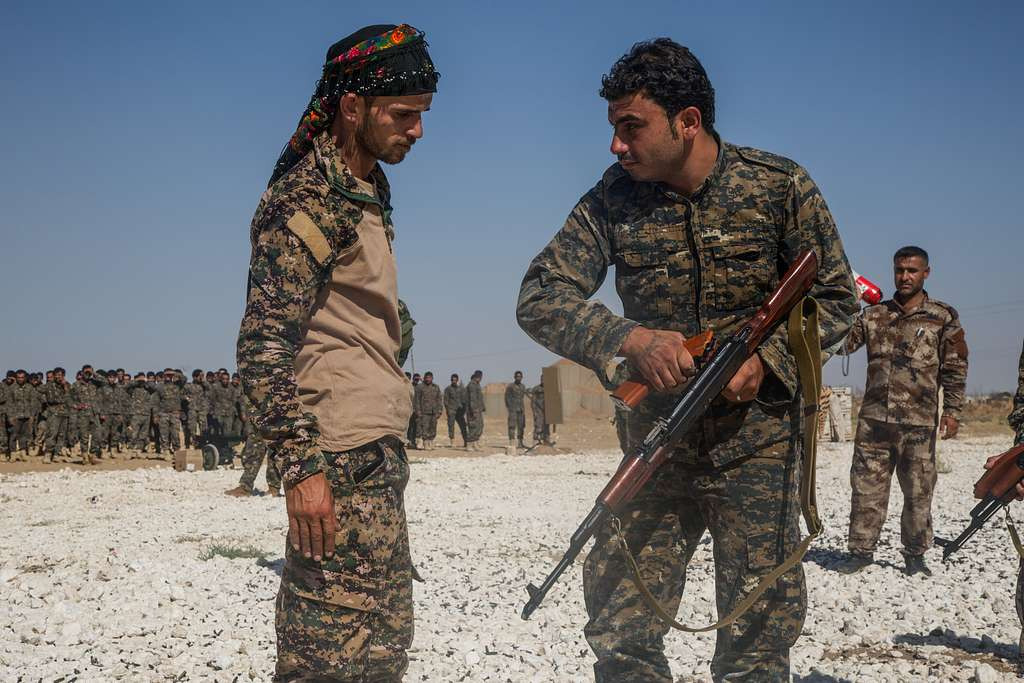
While there are many domestic factors as to why this revolt happened in the first place, it is the external influences that Kurdish leaders thought were behind that serious rebellion against their rule. Kurdish officials, particularly those with the SDF, had been very careful in balancing their precarious presence in that part of Syria—steering clear from the Syrian regime of President Bashar al-Assad and its Iranian backers. This is because their relationship with the United States has largely been a military one that is confined to the war on ISIS. The Kurds feel they do not have the political support that they have been striving to receive from Washington to ensure their place within Syria.
However, the Kurds were quick this time to blame both Tehran and Damascus for not only instigating the multi-day revolt in Deir Ezzor, but also actively sending men and weapons from the regime-held western side of the Euphrates River into the SDF-held eastern side in order to destabilize the Kurdish-led group’s territory. The explicit and assured Kurdish position toward the Syrian regime and its Iranian allies was perhaps a signal to Washington and others in the West that Kurdish self-rule was facing a real risk. It was then that the U.S.-led Coalition against ISIS issued a statement, reaffirming its solid support for the SDF. The Kurdish group and local Arab allies were able to quell the revolt in Deir Ezzor, but the situation remains unsettled. It is important to note that the population of Deir Ezzor is almost exclusively Sunni Arab. Ethnic Kurds have no presence there. Some influential Arab tribes can’t simply accept a Kurdish-led rule over their region, imposing progressive policies that oftentimes contradict with the ultra-conservative values of the local Arab population.
The Syrian regime and its Iranian allies understand these dynamics very well. So they prey on fueling anti-Kurdish sentiment with the hope of sparking further ethnic tensions between Arabs and Kurds and ultimately creating a scenario where a Kurdish presence will no longer be tolerated in Dier Ezzor. The September revolt was undoubtedly part of that plot.[2]
In October, Turkey launched its most intense bombardment campaign since its last invasion of Syrian Kurdish regions in 2019. Turkish artillery, airstrikes and drone attacks targeted dozens of Kurdish cities, towns and villages along the Syria-Turkey border. According to one local monitor group, Turkey carried out attacks against 131 targets in northeast Syria, most of which were civilian infrastructure. Among those were oil and natural gas fields, power plants, schools, hospitals and industrial factories—in addition to military targets belonging to the SDF.[3] Turkish officials, including President Recep Tayyip Erdoğan and Foreign Minister Hakan Fidan, openly said that their objective in that campaign was to destroy sources of income for Syrian Kurdish forces.[4] Turkey has made clear that it will not allow a Kurdish entity to exist on its southern border. Hence the targeting of civilian infrastructure and vital points of interest in northeast Syria are aimed at keeping the Kurds from standing on their feet and thinking about further political and economic developments for their nascent autonomy.[5]
Ankara considers the SDF as part of the Kurdistan Workers’ Party (Partiya Karkerên Kurdistanê, or PKK), which is designated a terrorist group by Turkey, the U.S., and the E.U. Washington, however, makes a very clear distinction between the two Kurdish groups. The SDF has been a major U.S. partner in the fight against ISIS.[6] The Turks say a Kurdish-held, PKK-friendly region in Syria poses a direct threat to its national security. In fact, the recent intensification of Turkish strikes on Syrian Kurds was in response to a bombing attack on October 1, 2023, in front of Turkey’s General Directorate of Security in Ankara, which left two police officers wounded. Turkey immediately said the two attackers had been trained in Syria. Kurdish Syrian officials denied the accusation, and there is no concrete evidence to support the Turkish claim.
While the United States did not overtly support the establishment of a Kurdish-led autonomous region in northeast Syria in the early years of the conflict, it was its military support for Kurdish forces against ISIS that helped expand Kurdish gains and further their self-rule.
Kurdish autonomy in Syria came about in the wake of the civil war, at a time when the central government in Damascus was at its weakest. Prior to that, Kurds in Syria did not have any form of self-government – or any other political, cultural and linguistic rights for that matter.[7] And while Assad’s army and his Iranian and Russian backers were busy combatting Sunni rebels elsewhere in the country, the Syrian regime had no choice but to accept a situation where the Kurds ran the show in the northeast. But from Assad’s perspective, Kurdish-led self-rule was never intended to be a permanent reality, let alone to expand. His hope was for the Kurds to be a placeholder in the northeast until his regime would be fully capable of governing the entire country.
Now that the civil war has largely subsided, the regime wants to regain its control of the Kurdish-held region in northeast Syria. Assad and other regime officials have repeatedly expressed their desire to reestablish Damascus’ control over every inch of Syria’s territory. The SDF-controlled region makes up roughly one third of Syria’s territory. This includes the Kurdish heartland along the border with Turkey as well as Arab tribal regions in the east along the border with Iraq. Both regions happen to be the country’s richest in terms of resources. And after more than a decade of brutal civil war, the Syrian regime wants to have access to every resource that could help its shattered economy.
The Syrian regime, Iran, and Turkey—and of course Russia by way of supporting the Assad regime and antagonizing the U.S.—have a vested interest in destroying this Kurdish entity in northeast Syria.[8] Their different strategic interests converge under a common objective of reducing America’s influence and footprint in Syria. For them, the existence of a Kurdish autonomous administration in northeast Syria is closely tied with the presence of American forces, which number about 900 troops who are there as part of the U.S.-led coalition against ISIS. Therefore, ending Kurdish autonomy will reduce America’s influence in Syria. But in order to eliminate this Kurdish self-rule experiment they will first have to make sure America no longer supports Syrian Kurds. It is certainly a catch-22 situation for these actors that they are trying everything in their political and military power to end.
For Damascus, the objective is simple and clear: Kurds must be tamed. They cannot become more powerful than they already are. The longer Kurdish forces receive military support from the U.S. the harder it is for the Syrian regime to keep the Kurds in check. After all, the SDF has grown into a 65,000-strong semi-conventional military force equipped and trained by the best military advisers in the world. After nearly a decade of fighting ISIS terrorists and other armed groups in Syria, the SDF has become a sophisticated military actor in the Syrian context, with well-developed, disciplined and specialized units that have proven their effectiveness on the battlefield. Despite its depleted military, the Syrian regime has two other military advantages that give it a superiority over the SDF: its air force and the support of Iranian-backed militias.
Nonetheless, the Syrians know better not to wage any large-scale military assaults on the Kurds while American forces are deployed in the Kurdish-held region. They would use their proxies to destabilize the SDF rule and undermine its autonomy, without the risk of any direct confrontation with American troops. Their current goal appears to be chipping away at the SDF-held region through applying constant political and economic pressures on the Kurdish group and its civilian administration. The Kurdish region remains economically dependent on the Syrian regime. Its control over local resources and trade ties with Iraqi Kurdistan don’t seem to be sufficient for a viable economy for northeast Syria that is entirely independent from Damascus.
The current expansive autonomy that Syrian Kurds and other communities in northeast Syria enjoy cannot be accepted in any shape or form by Damascus, given the centralist mindset of the Baath regime. In the best-case scenario, the Assad regime could be fine with granting the Kurds some limited powers in the local administrative councils. The regime has repeatedly referred to its current local administration law, which was first ratified in 2011 and then in 2022, as the only form of governance that must be accepted in the country. This has been a major point of dispute between Damascus and Kurdish representatives during several rounds of talks. Kurdish officials now say such talks have been suspended indefinitely because the Syrian regime is not willing to make any concessions. They Kurds want to make their de facto autonomy a formal one, but it doesn’t seem that the regime is ready to accept it.[9]
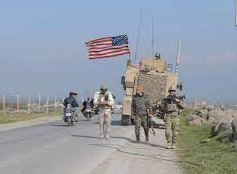
For Tehran, an American-backed Kurdish-led entity in Syria is not such a short-term nuisance. It is a major obstacle for its long-term expansionist ambitions in the broader region. The so-called “Shiite Crescent” that aims at creating an overland corridor between Tehran to Beirut, going through Iraq and Syria, will not be accomplished without removing American forces from the region, namely the border areas between Iraq and Syria, both of which have an American military presence, more significantly on the Syrian side. The American military presence in Syria is also in contrast to Tehran’s vision of establishing governing structures in the country and elsewhere in the region that are sectarian-based, militia-oriented, and most importantly loyal to the Wilayat al-Faqih. The existence of a pro-American Kurdish enclave in Syria is delaying such plans. While Tehran is aware that carrying out occasional attacks, through its many proxies, on U.S. bases in Syria may not force the Americans to leave, it continuously seeks to empower Arab militias in eastern Syria with the goal of exhausting the SDF, America’s partners, who are engaged in many fronts, whether against remnants of ISIS or Turkey-backed militias elsewhere in northern Syria. Recognizing its limited options on the ground to alter current dynamics in eastern Syria, Iran hopes that Turkish threats could eventually sabotage the Kurdish experiment and force the Kurds to cede the region to the Syrian regime, which will automatically achieve Tehran’s goals.
As for Turkey, it is no longer a secret that Ankara’s Syria policy has largely been driven by its anti-Kurdish approach, at least in a past few years. Its opposition to political autonomy for the nearly three million Kurds in Syria derives from perceived concerns that such a gain could empower the much larger Kurdish population inside Turkey itself.
Since 2016 Turkey has launched multiple large-scale invasions into northern Syria either to dislodge Kurdish forces from certain border regions or inhibit the Kurds from taking territory previously controlled by ISIS. The last Turkish invasion into Kurdish territory in northern Syria was in 2019 shortly after U.S. troops partially withdrew from several Kurdish border towns. Ankara constantly threatens to wage additional ground assaults against the SDF and other Kurdish groups within its ranks. But the only thing that seemingly has made them stop short on such threats is the presence of U.S. troops in northeast Syria. Turkey certainly cannot carry out any new invasions into the region where Americans have physical presence. And it doesn’t look like U.S. forces will withdraw from Syria anytime soon. Washington recognizes that its forces there have been instrumental in assisting and advising local Kurdish forces to ensure the ultimate defeat of ISIS remnants. It also fears that a new Turkish invasion could allow the resurgence of ISIS—both because Ankara’s focus in Syria is to defeat the Kurds not ISIS, and because Turkey’s very invasion would undoubtedly cause chaos and distraction from the fight against ISIS terrorists.[10]
In what seems to have become an alternative compromise, Turkey’s drone and airstrike campaign continues to hit crucial targets in the Kurdish region of Syria. While the United States is firm on opposing any Turkish military adventure that would imperil gains made against ISIS, it shows understanding about Ankara’s stated security concerns in Syria—which may explain Washington’s tacit acceptance of these aerial Turkish attacks in northeast Syria if they don’t put the anti-ISIS missions at risk. For Ankara, this could be satisfying as long as it keeps the Kurdish region unstable and prevents the Kurds from expanding territorially, politically and economically.
Turkey has come to understand that American troops cannot stay in Syria indefinitely. It also realizes that once U.S. forces leave northeast Syria, eradicating the Kurdish autonomy there would be a matter of time. That inevitable American departure is what Tehran and Damascus are also eagerly on the outlook for.
The Kurdistan Region of Iraq and Its Shrinking Autonomy
Unlike their brethren in Syria, Iraqi Kurds have a much longer history with political autonomy. Their experience with self-rule dates to 2003. In fact, they started experimenting with autonomy in 1991 after a U.S.-led coalition imposed a no-fly zone over northern Iraq and established “safe havens” in the Kurdistan region. They even had nominal autonomy of sorts after a 1970 agreement between the Kurds and the Baathist regime of then-president Ahmed Hassan al-Bakr.
But none of that decades-long experience with autonomy seems to matter now as the central government in Baghdad continues its efforts to tighten its grip over many affairs of Iraqi Kurds that were until recently almost taken for granted. This includes matters such as the control of border crossings and airports, budget, oil revenue and the status of provincial councils of the Kurdistan Region.
While Baghdad’s attempts at curbing Kurdish autonomy in the north seem to have stepped up in recent months, the situation has been on a downward slope for Iraqi Kurds since October 2017, after a major referendum for Kurdish independence. The ill-fated voting for Kurdish statehood, which was favored by of the vast majority of local Kurds, gave a pretext for the Iraqi government to take retaliatory measures against the Kurdistan Regional Government (KRG).
Even though the right to a federated region for Kurds has been enshrined in Iraq’s constitution, which was adopted in 2005, Iraqi Kurds no longer feel that such an article in the country’s most important document could guarantee their autonomy. That is because the Iraqi government increasingly has been dominated by pro-Iranian Shiite groups that have both sectarian and nationalistic tendencies.
Since the failed referendum in 2017, Iranian-backed Shiite militias, most of which also have the support of Baghdad, have been taking over more areas in what is known as “disputed territories.” These are areas claimed by both the KRG and the central Iraqi government. The Kurds were able to take full control of most of them during the war on ISIS in 2014 and onward. But the 2017 referendum not only gave a unique political power to the Iraqi government and its militias to retake those areas controlled by Kurds since 2014, but also allowed them to dislodge Kurdish forces from some other areas in the vicinity that had been under Kurdish control since 2003.
In line of that policy, Iran-backed Shiite militias and their local supporters in the multi-ethnic city of Kirkuk, also part of the disputed territories, rejected an order by the Iraqi Prime Minister Mohammed Shia’ al-Sudani in September to return a building in the city to the Kurdistan Democratic Party (KDP), the ruling party in KRG, which had been emptied since October 2017. It evolved into violent clashes with Kurdish residents of the city that resulted in the death of four Kurdish civilians. The deadly events prompted Iraq’s federal supreme court to suspend the implementation of al-Sudani’s order, which was largely seen as a success for the pro-Iranian Shiite militias.[11]
The shrinking of areas controlled by Kurds in northern Iraq has been coupled with KRG’s overall diminishing role in Iraqi politics. Since 2003, Kurds were a major player in the makeup of the extremely delicate Iraqi national politics, which has mostly been characterized by ethno-sectarianism. Kurdish leaders indeed played a significant role in keeping Iraq as a unified country, particularly during a bloody period between 2006 and 2007 which witnessed the most sectarian-inspired violence between Sunni and Shiite groups. It was the Kurds who played a mediating role between two sides, which ultimately averted the breakup of Iraq – something that Kurds ironically have always been accused of championing.
The Kurds also played kingmakers in the formation of successive Iraqi governments since 2005. The unified position between the KDP, the Patriotic Union of Kurdistan (PUK) and other Kurdish parties gave the Kurds leverage in negotiations over pressing matters in national Iraqi politics and allowed the KRG to sustain its autonomy.
That no longer seems to be the case.[12] The “Kurdish House” is now divided more than ever before. The so-called Strategic Agreement signed in 2006 between the KDP and PUK that unified the different administrations in Iraqi Kurdistan under the leadership of KRG has been rendered worthless in recent years due to growingly divergent views by the two parties and the emergence of other political forces that have shaken up the foundational legitimacy of the KRG as a solid governing body.[13]
A purported letter recently sent by KRG Prime Minister Masrour Barzani to President Biden may be summing up the dire situation of Iraqi Kurds. In the letter, reportedly sent in early September, Barzani urged to Biden to intervene in revolving longstanding issues between the KRG and Baghdad, expressing concerns that the if the crisis is left unresolved the Kurdistan Region could collapse altogether.[14]
But the deep divisions within the main political parties in Iraqi Kurdistan must not be looked at independently from attempts by regional powers, namely Turkey and Iran, that are aimed at, if not destroying, at least limiting Kurdish autonomy in Iraq. Both countries were vehemently opposed to the referendum on Kurdish independence in 2017. And since then, they appear to have been working, at times closely, toward breaking up any prospect for Kurdish statehood or even strong autonomy within Iraq. Through a pro-Iranian central government in Baghdad, the KRG in recent months has been deprived of many significant financial resources, including blocking its oil exports to Turkey.[15] And the talks between Baghdad and KRG over the latter’s share of the national budget are not likely to see any breakthroughs. It seems that the Iraqi government is only interested in reaching temporary solutions that are designed to keep the Kurds at the mercy of Baghdad. Coupled with an endemic corruption in KRG’s government institutions, this unstable financial situation has caused a growing indignation within the Kurdish population toward the KRG’s performance, with some local voices even calling for a stronger say by the federal government in local affairs in Iraqi Kurdistan; something Kurdish officials fear will totally undermine their hard-fought autonomy.[16]
The sharp differences between the KDP and PUK, the two political powerhouses in Iraqi Kurdistan, are also attributed to attempts by Iran and Turkey to divide the “Kurdish House,” with Ankara supporting the KDP, while Tehran is backing the PUK. These growing divisions have led to a lack of a unified Kurdish front, not only in the Iraqi parliament and the makeup of the Iraqi government, but also in KRG-Baghdad talks over issues of strategic significance to Iraqi Kurdistan.[17]
There are also external cards that Iran and Turkey have been using to further pressure Iraqi Kurds. For Tehran, it is the presence of Iranian Kurdish opposition groups in Iraqi Kurdistan. For many years, several armed Kurdish groups exiled from Iran have been based in the Kurdistan region. These include the Kurdistan Democratic Party of Iran, the Komala Party of Iranian Kurdistan, and the Kurdistan Freedom Party (PAK). Their presence there has given excuses to the Iranian regime to carry out numerous attacks on Iraqi Kurdish territory.
While these groups have not posed a real threat to Iran, Tehran has been insisting on disarming and relocating them from the border region between KRG and Iran. In late August 2023, Iran and Iraq reached an agreement that would force the KRG to empty the bases of Iranian Kurdish groups. A deadline was given to the KRG to implement the agreement the following month.[18] Iraqi Kurdish authorities had no choice but to yield to such demands. Some of the bases evacuated by Iranian Kurdish groups were taken by Iraqi border guards or joint Iraqi-Kurdish units, a move seen as yet another blow to the KRG and its authority.
Turkey, on the other hand, has been using the presence of PKK fighters in a remote, inaccessible part of Iraqi Kurdistan as a pretext to not only carry out cross-border attacks and airstrikes, but also expand its military presence in the KRG by establishing dozens of permanent military outposts.[19] Occasional incursions, and a growing airstrike campaign in recent months, by the Turkish military have left large numbers of Iraqi Kurdish civilians dead and forced thousands of villagers in the border region to flee their homes.[20] Regardless of how the KRG – more particularly the KDP – views the presence of PKK within its borders, such Turkish attacks undermine the legitimacy of the KRG as an entity and damage the trust of local Kurds in their government. Even though the KDP is seen as closely partnering with Turkey, Ankara remains focused on portraying the KRG as an unreliable actor.
Conclusion
While the current situation for Kurdish autonomies in Iraq and Syria rightfully seems gloomy, there is still a glimmer of hope for these two pro-American entities to not only overcome these difficult circumstances but also thrive to become strong long-term U.S. allies in a region increasingly becoming anti-American. The Kurds in both countries still possess significant political and military cards that could be used to maintain their autonomous regions. Just as how the respective existence of these two Kurdish regions was, albeit variably, thanks to American intervention, their long-term survival may also be possible with a strong, continued American commitment.
Given the current dire situation for Kurds in both countries, the United States can prioritize its objectives to help the Kurds save their political gains. For one, staying the course is crucially important for Syrian and Iraqi Kurds. This means a continued American military and diplomatic engagement with both dossiers. Doing so can be an assurance for short- and medium-term stability.
Another important aspect is for the U.S. to help both entities strengthen their democratic institutions and allow for pluralistic governing systems to flourish. The pro-American sentiment among Kurds in Iraq and Syria remains high. Therefore, Washington can capitalize on that to invest more in democratization, economic development, community capacity-building and other aspects of growth that could be of benefit for the Kurds in both countries on the long-run.
Even though these are two autonomous regions in two different countries, America’s enemies and adversaries view them as part of one project, one that they are determined to destroy. It is not only the right thing for America to protect these Kurdish entities, but also in its best interests to do so.
Sirwan Kajjo is a Washington-based journalist and researcher who focuses on Kurdish politics in the Middle East.
[1] Fabrice Balanche, “From Kirkuk to Deir ez-Zor: Threatened Kurdish Autonomies,” The French Research Center on Iraq (CFRI), Paris, Sept. 8, 2023.
[2] Author Interview with an SDF official who requested anonymity, Sept. 29, 2023.
[3] “‘Turkiya Tudamir al-Bunya At-tahtiya’.. istihtaf 131 mauqeaan khilal 48 Sa’a fi Shamal Suriya” North Press, October 7, 2023.
[4] “Erdogan Vows To Intensify Strikes On Kurd Fighters In Iraq, Syria,” Agence France Presse, Oct. 11, 2023.
[5] “Turkey will not refrain from targeting Kurdish forces in Syria: FM,” Rudaw, Erbil, October 18, 2023.
[6] Pinar Tank, “Preserving Kurdish Autonomy,” Carnegie Endowment for International Peace, Jan. 29, 2019.
[7] Sirwan Kajjo, “Syrian Kurds: Rising from the Ashes of Persecution,” in The Syrian War: Between Justice and Political Reality, ed. Hilly Moodrick-Even Khen, Nir T. Boms, and Sareta Ashraph, Cambridge University Press, 2020, p. 268–86.
[8] Steven Erlanger, “Seeking ‘Axis of Good’ Against U.S., Russia Taps Allies of Convenience,” New York Times, Brussels, July 20, 2022.
[9] “Analysis: How Serious Are Talks Between Assad and Syrian Kurds?” Middle East Center for Reporting and Analysis, Feb. 12, 2020.
[10] Ellen Loanes, “Why the US doesn’t want Turkey to invade Syria,” VOX, July 17, 2022.
[11] “Iraq’s highest court halts government order to return Kirkuk army building to KDP,” The National, Abu Dhabi, Sept. 4, 2023.
[12] Yerevan Saeed, “In Iraq, the Kurds Are Their Own Worst Enemy,” The Washington Institute for Near East Policy, June 17, 2023.
[13] Beston Husen Arif, “KDP-PUK Strategic Agreement and Its Consequences for the Governing System in the Kurdistan Region of Iraq,” Journal of Asian and African Studies, Dec. 29, 2022.
[14] Amberin Zaman, “In letter to Biden, Barzani warns of Iraqi Kurdistan’s collapse, urges mediation,” Al-Monitor, Washington, Sept. 12, 2023.
[15] Rikar Hussien, “Cash-Starved Iraqi Kurds See Iran’s Hand in Budget Crisis,” Voice of America, Washington, Sept. 14, 2023.
[16] Bilal Wahab, “How to Stop Iraqi Kurdistan’s ‘Bleeding,’” The Washington Institute for Near East Policy, Washington, Sept. 28, 2023.
[17] Author interview with a KRG official who requested anonymity. October 19, 2023.
[18] “Tehran and Baghdad reach a deal to disarm and relocate Iranian dissident groups based in north Iraq,” The Associated Press, Aug. 28, 2023.
[19] Yousif Ismael, “Turkey’s Growing Military Presence in the Kurdish Region of Iraq,” The Washington Institute for Near East Policy, May 18, 2022.
[20] Amina Ismail, Lina Masri, “As Turkey intensifies war on Kurdish militants in Iraq, civilians are suffering,” Reuters, Sinjar, Iraq, Oct. 10, 2023.

